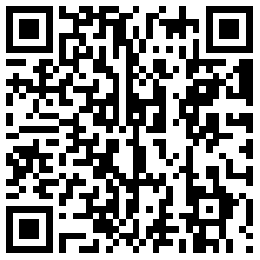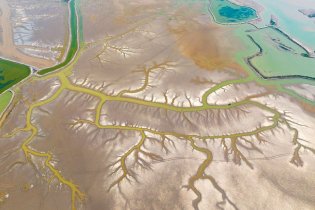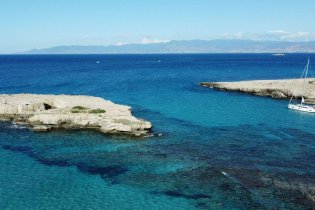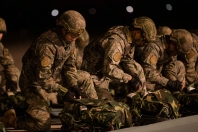Geospace Environment ModelingMessengerMay 08, 2022Volume 32, Number 16
Table of Contents
=========会议及活动=========
Invitation to submit papers to "Fifteen Years of THEMIS Mission" JGR special issue
Call for abstracts to PRE 9, Dublin, 26-28 Sept. 2022
Next SCOSTEP seminar
Magnetosphere Online Seminar Series
Space Weather Simulation Summer School
=========就业=========
Call for Applications for Multiple GEM Steering Committee Positions
JOB OPENING: Director, Goddard Earth Sciences Technology and Research II (GESTAR II) University of Maryland, Baltimore County
JOB OPENINGS: Upcoming Job openings at GSFC ITM lab
JOB OPENING: Postdoc position in modelling stellar wind interaction with exoplanets, Umeå, Sweden
✦
1
Invitation to submit papers to "Fifteen Years of THEMIS Mission" JGR special issue
From: Emmanuel Masongsong, Anton Artemyev (emasongsong@igpp.ucla.edu)
We are happy to invite you to submit to a JGR special collection issue, commemorating 15 years of THEMIS-ARTEMIS! Details and submission instructions are available at the link below. Feel free to contact Emmanuel or Anton if you have any questions. Profound thanks to everyone for their ongoing support to make these missions a success!
Best wishes,
Vassilis Angelopoulos, Emmanuel Masongsong, and Anton Artemyev
https://agupubs.onlinelibrary.wiley.com/hub/jgr/journal/21699402/features/call-for-papers
Call for Papers for ""Fifteen Years of THEMIS Mission”
Open for Submissions: 1 April 2022
Submission Deadline: 31 January 2023
Special Collection Organizers:
Vassilis Angelopoulos, University of California, Los Angeles
David Sibeck, Goddard Space Flight Center
Xiaojia Zhang, University of California, Los Angeles
Jasper Halekas, University of Iowa
Tai Phan, University of California, Berkeley
Steve Milan, University of Leicester
The THEMIS mission, launched in 2007 and then bifurcated into THEMIS (in Earth orbit) and ARTEMIS (in lunar orbit), comprises five identical spacecraft (probes) and a network of ground-based magnetometers and all-sky-cameras. Although THEMIS was originally focused on the location and nature of substorm onset in the Earth’s magnetotail, it now explores a much broader range of space plasma topics: from the radiation belts and magnetosphere-ionosphere coupling to solar wind-magnetosphere interactions and the lunar plasma environment. THEMIS and ARTEMIS help quantify the solar wind-magnetosphere energy cycle, including energy entry into the magnetosphere, storage within the magnetotail, release via charged particle acceleration, and injection into the inner magnetosphere. The two ARTEMIS probes contribute to our understanding of the lunar environment, revealing the physics of plasma interactions with the Moon's surface, crustal magnetic fields, exosphere, and wake. THEMIS and ARTEMIS also provide context to and connections between other magnetospheric missions, enabling a global framework of assets, the Heliophysics System Observatory. This special JGR collection covers the wide range of topics where THEMIS and ARTEMIS spacecraft and associated ground-based networks provide measurements crucial for our understanding of space weather phenomena and fundamental plasma physics. Studies including THEMIS/ARTEMIS conjugate measurements with low-altitude satellites, ground-based observatories, and other magnetospheric missions, as well as simulations driven by such measurements are also encouraged.
✦
2
Call for abstracts to PRE 9, Dublin, 26-28 Sept. 2022
From: Georg Fischer (georg.fischer@oeaw.ac.at)
The 9th International Workshop on Planetary, Solar and Heliospheric Radio Emissions (PRE 9) deals with the most recent developments in the study of non-thermal radio emissions from the Sun, the radio planets, the heliosphere, and from extrasolar sources like exoplanets or brown dwarfs. Special emphasis is put on current and future spacecraft missions (Juno, Solar Orbiter, JUICE), but also new developments in ground-based radio telescopic observations (e.g. with LOFAR) will be matters of discussion.
PRE 9 is the continuation of a series of workshops that took place in and near Graz/Austria in 1984, 1987, 1991, 1996, 2001, 2005, 2010, and 2016. However, PRE 9 has now moved to Dublin/Ireland!
For more information please visit our website at https://pre2022.dias.ie/. The abstract deadline is on 3 June 2022, and the workshop will take place 26-28 September in Dublin. It will be primarily an in-person meeting with some hybrid options. The organizing committee is looking forward to your abstract submission.
SOC: Caitriona Jackman, Georg Fischer, Laurent Lamy, Hamish Reid, and Pietro Zucca
LOC: Eoin Carley, Eileen Flood, Alexandra Fogg, Peter Gallagher, Caitriona Jackman, Corentin Louis, Sophie Murray, Elizabeth O’Dwyer, James Waters
✦
3
Next SCOSTEP seminar
From: Ramon Lopez (relopez@uta.edu)
Dear SCOSTEP colleagues,
We are pleased to announce that the next SCOSTEP/PRESTO Online Seminar by
Dr. Christine Gabrielse will be held via online as below. To join the seminar,
please register via the zoom addresses as below.
Best wishes,
Ramon Lopez, PRESTO Chair
****************
13-1th SCOSTEP/PRESTO Online Seminar
Title: Mesoscales and their Contribution to the Global Response: A Focus on the Magnetotail Transition Region and Magnetosphere-Ionosphere Coupling
Author: Dr. Christine Gabrielse
Affiliation: The Aerospace Corporation, USA
Date/time: May 18 (Thu), 2022, 22:00-23:00 UT
Zoom Registration URL (pre-registration is necessary):
https://nam12.safelinks.protection.outlook.com/?url=https%3A%2F%2Fus02web.zoom.us%2Fwebinar%2Fregister%2FWN_LBlCq-1ZSyiXRQ3pSyBVgg&data=05%7C01%7Crelopez%40uta.edu%7Cdf71728bd9be4b2032cf08da2d62eb2c%7C5cdc5b43d7be4caa8173729e3b0a62d9%7C1%7C0%7C637872200136799154%7CUnknown%7CTWFpbGZsb3d8eyJWIjoiMC4wLjAwMDAiLCJQIjoiV2luMzIiLCJBTiI6Ik1haWwiLCJXVCI6Mn0%3D%7C3000%7C%7C%7C&sdata=rb9JbER0mkGJ0wLhLFB7D%2FahZcG016WY1aFLZ4Qsmr8%3D&reserved=0
Abstract:
How do mesoscale phenomena contribute to the global response of the system?
This question has risen to the forefront of the space physics community in recent
years, and has been the topic of a Geospace Environment Modeling (GEM) Focus
Group since 2017. Specifically, community members have been studying if and
how much mesoscale transport in the tail contributes to the more global response
at the dipole-stretched transition region with respect to magnetic flux and
dipolarization, particle transport and injections, and the substorm current wedge.
How this relates to the coupled ionosphere is also an important consideration.
This talk will summarize some results that were compiled to answer this question,
and poses more questions to the audience to consider with regards to further
understanding how mesoscale phenomena contribute to the system global response.
----------------------
✦
4
Magnetosphere Online Seminar Series
From: Homayon Aryan, David Sibeck, Kyle Murphy et al., (magnetosphere.seminars@gmail.com)
We invite you to join us every Monday at 12pm (ET) for the weekly Magnetosphere Online Seminar Series. On Monday 9 May, John Coxon will discuss Birkeland Currents.
A link to join the seminar via Zoom or YouTube can be found on our home page: https://msolss.github.io/MagSeminars/
The password to join the Zoom seminar is: Mag@1
You can view the current 2021 schedule here: https://msolss.github.io/MagSeminars/schedule.html
Add your name to our mailing list here: https://msolss.github.io/MagSeminars/mail-list.html
Read about previous talks here: https://msolss.github.io/MagSeminars/blog.html
✦
5
Space Weather Simulation Summer School
From: Qusai Al Shidi (qusai@umich.edu)
To all students involved in numerical and simulation topics regarding space weather,
Please join us for a summer school on running space weather simulations. This will take place starting on July 18 2022 to July 28 2022. We will be having daily workshops on coding, running simulations, using supercomputers and learning UNIX-like systems, collaborating on code through Git and so on. This will take place at the University of Colorado, Boulder where room and board will be provided, along with transportation between residences and classrooms. The target audience for this are graduate students, but undergraduates and post-docs may apply.
The first week will be beginner-focused, covering the basics of coding, and the skills required to run simulations on supercomputers. The second week will cover more advanced topics like numerical solvers and will start to build simulations for simple space weather applications.
To apply please fill out the Google form https://forms.gle/3UmoUCk8LRwzDE217 . You may send any questions to qusai@umich.edu .
Looking forward to seeing you,
Space Weather Simulation Summer School team,
Qusai Al Shidi, University of Michigan
Aaron Ridley, University of Michigan
Peng Mun Siew, Massachusetts Institute of Technology
✦
1
Call for Applications for Multiple GEM Steering Committee Positions
From: Vania Jordanova, Adam Kellerman (vania@lanl.gov)
Dear GEM Community,
Several members of the GEM Steering Committee (SC) are ending their terms and we are soliciting applications or nominations for their replacement:
• GEM Steering Committee Vice-Chair (Chair-Elect);
• GEM Steering Committee At-Large Member;
• two Research Area Coordinators (RACs), for the Solar Wind - Magnetosphere Interaction (SWMI) and the Global System Modeling (GSM) research areas.
The success of the GEM program relies upon the dedicated service of the SC members; a list of the current Steering Committee and related information is available at the GEM Wiki. All SC members serve a staggered 4-year term, for more details on the positions please see the GEM Bylaws: https://gem.epss.ucla.edu/mediawiki/index.php/GEM_Bylaws
In addition, the duties of the various SC positions are summarized in the GEM “best practices” document, which can be found at:
http://gem.epss.ucla.edu/mediawiki/pdf/GEM_BestPractices_6Oct2019.pdf
To apply, please submit a brief (no more than two pages) CV and a separate statement of interest (about a half page) describing your interest in the position, any relevant experience, and your expected approach to serve the GEM community and maintain an interactive workshop style. Please send these documents to the current GEM SC Chair Vania Jordanova (vania at lanl.gov) and Vice-Chair Adam Kellerman (akellerman at epss.ucla.edu) by June 5; the name and contact information of nominations should be sent to the same addresses. The selection of these new positions will occur at the steering committee meeting which typically takes place the Sunday evening before the GEM Summer Workshop (https://gemworkshop.org/).
Please don’t hesitate to reach out to any GEM steering committee member if you have questions. Thank you for your support of GEM!
✦
2
JOB OPENING: Director, Goddard Earth Sciences Technology and Research II (GESTAR II) University of Maryland, Baltimore County
From: Dr. Karl V. Steiner (halleyt@umbc.edu)
Director, Goddard Earth Sciences Technology and Research II (GESTAR II) University of Maryland, Baltimore County
The University of Maryland, Baltimore County (UMBC) invites applications for a Director for its
Goddard Earth Sciences Technology and Research II (GESTAR II) Center. The incumbent should
hold a Ph.D. in a related field and qualify for appointment as a tenured full professor within an
academic department at UMBC. The position is available in the Summer of 2022.
GESTAR II is funded primarily by a Cooperative Agreement with the NASA Goddard Space Flight
Center (GSFC). It has a research staff of approximately 120 scientists and faculty, many of whom
collaborate with scientists at GSFC and other entities in research related to the observation,
analysis, and modeling of physical processes within the Earth-Sun system, and to global climate
change issues on Earth. Additional GESTAR II partners include Morgan State University (MSU),
Arizona State University (ASU), Colorado State University (CSU), Penn State University (PSU), and
the Southeastern Universities Research Association (SURA). More information about the
program is available at gestar2.umbc.edu.
The GESTAR II Director provides the overall scientific vision and leadership for the Center and
serves as the Center’s principal interface to GSFC, to the UMBC leadership and academic
community, and GESTAR II partner directors. The Director, in collaboration with the GESTAR II
partners, is responsible for the overall management of the Center, and for the scientific quality
and integrity of the research performed by the Center’s research faculty and staff, who are
located at GSFC, at UMBC, and at GESTAR II partner institutions.
The GESTAR II Director brings a demonstrated portfolio of scientific and technical expertise in
Earth, Atmospheric, and Oceanic sciences and holds a distinguished research portfolio and
national reputation in a related and relevant area. As part of this position, the GESTAR II
Director will be expected to devote a significant amount of time on research and teaching at
UMBC and is expected to actively contribute to the education and mentorship of graduate
students and junior scientists.
As GESTAR II Director the incumbent reports directly to the Vice President for Research at
UMBC.
UMBC has a history of over a quarter Century of successful cooperative partnerships with GSFC,
with over 200 faculty, scientist and researchers actively working in several research centers. In
addition to GESTAR II, UMBC is working with GSFC under the Center for Space Sciences and
Technology (CSST – csst.umbc.edu), the Joint Center for Earth Systems Technology (JCET –
jcet.umbc.edu), and the Goddard Planetary Heliophysics Institute (GPHI – gphi.umbc.edu).
UMBC is currently ranked at #15 in NASA funding among all U.S. Colleges and Universities.
UMBC is proud to be one of the fastest growing and most diverse public research universities in
the nation, with just over fifty percent of its 14,000 students self-identifying as students of color.
The University’s vibrant campus is regarded as a new model for American higher education – a
place where talented students, faculty, and staff thrive in a culture that embraces new ideas and
strong shared governance. In 2022, U.S. News and World Report ranks UMBC as the #6
institution for undergraduate teaching in the nation, and it has consistently ranked as one of the
“most innovative” national universities and one of the nation’s leading institutions for social and
economic impact.
In 2022, UMBC was classified by the Carnegie Foundation as a Doctoral University with Very
High Research Activity – also known as a Carnegie R1 institution. More information about
UMBC’s extensive research portfolio and our institutional commitment to inclusive excellence in
research and teaching is available at research.umbc.edu.
UMBC’s campus is located on 500 acres just off I-95 between Baltimore, MD and Washington
DC, and less than 10 minutes from the BWI airport and Amtrak station and in close proximity to
many federal laboratories including GSFC. The university was founded in 1966 and has grown to
approximately 14,000 students including some 3,000 graduate students.
Application Requirements: Electronic submission of applications is required via
http://apply.interfolio.com/106409
All applications must be submitted as PDF files. Individual applications will not be reviewed until
all four of the following materials are received:
1) Cover Letter
2) Curriculum Vitae
3) Statement regarding research plans
4) Statement regarding experience and commitment to diversity and inclusion
5) Names and contact information of at least three references
For inquiries regarding this position, please send email to Dr. Karl V. Steiner, Vice President for
Research, steinerk@umbc.edu. Review of applications will begin on June 1, 2022 and will
continue until the position is filled.
In order to receive full consideration all application materials should be submitted prior to this
date.
As an institution that receives federal financial assistance, UMBC adheres to Title IX and does
not discriminate on the basis of sex. For more information about Title IX and contact
information for Title IX Coordinator.
UMBC was established upon the land of the Piscataway Conoy and Susquehannock peoples.
Over time, citizens of many more Indigenous nations have come to reside in this region. We
humbly offer our respects to all past, present, and future Indigenous people connected to this
place.
UMBC is an Affirmative Action/Equal Opportunity Employer and welcomes applications from
minorities, women, veterans, and individuals with disabilities.
✦
3
JOB OPENINGS: Upcoming Job openings at GSFC ITM lab
From: Alexa Halford, Doug Rowland (Alexa.J.Halford@nasa.gov)
JOB OPENINGS: Two Civil Service Research Scientists at NASA Goddard Space Flight Center’s Ionosphere/Thermosphere/Mesosphere Physics Lab (application period begins May 20, 2022)
The Ionosphere, Thermosphere, Mesosphere Physics Laboratory (“ITM Lab”) at NASA Goddard seeks to hire two full-time researchers studying aspects of ITM dynamics, coupling, and chemistry:
1) A senior (GS-15 – roughly equivalent to full professor) researcher with experience in developing whole atmosphere models and using them to address critical problems in ITM science. This is a “permanent” position, meaning it comes with civil service tenure after a one-year probation period. The application period for this position will be open May 20, 2022 through May 24, 2022. Applications are through USAJobs, and the vacancy announcement is located here:
https://www.usajobs.gov/job/649052900
2) An early-career (GS-13 – roughly equivalent to assistant professor) researcher with experience in using satellite and ground-based observations to address critical problems in ITM science. This is a six-year “term” position that has the potential to be converted to a tenured position. The application period for this position will be open from May 20, 2022 through May 26, 2022. Applications are through USAJobs, and the vacancy announcement is located here:
https://www.usajobs.gov/job/649054800
The ITM Lab, formed in 2018, consists of ~45 government and university researchers, and addresses a wide range of problems in the middle and upper atmospheres and ionospheres of Earth and other planets. Our lab cultivates strong collaborations with the Solar, Heliospheric, Geospace, and Space Weather Labs at NASA Goddard, providing great potential for interdisciplinary collaborations in Heliophysics. The ITM Lab also enjoys strong collaborations with NASA Goddard’s Earth Science, Planetary Science, and Astrophysics Divisions.
Because of the short application periods for these positions, we encourage interested applicants to prepare their USAJobs CV and other application materials well in advance to smooth the application process. The vacancy announcements listed above can be viewed now, but applications cannot be entered for those jobs until May 20, when the application periods open.
These are US Government Civil Service positions and applicants are expected to have experience in related areas of research. While most researchers live and work on-site at the Greenbelt, MD campus, there is flexibility for telework and remote work on a case-by-case basis. We encourage all interested to apply.
If you have questions about these positions, please contact:
Doug Rowland, ITM Lab Chief douglas.e.rowland@nasa.gov
Alexa Halford, ITM Lab Associate Chief alexa.j.halford@nasa.gov
✦
4
JOB OPENING: Postdoc position in modelling stellar wind interaction with exoplanets, Umeå, Sweden
From: Maria Hamrin (hamrin@space.umu.se)
The Department of Physics at Umeå University is offering a postdoctoral scholarship in modelling plasma stellar wind interactions with exoplanets. The scholarship is full-time for two years and the start date is 1 September, 2022 or by agreement.
The aim of our project is to advance our current understanding on the plasma interactions with planetary bodies of different sizes and characteristics (magnetized and unmagnetized, with and without a substantial atmosphere and ionosphere). Our focus will be on the kinetic processes that govern the interaction with these bodies and our primary focus will be on the atmospheric evolution using Amitis, a high-performance hybrid-kinetic plasma model.
Last day to apply is 15 June 2022.
For more information, please contact Dr. Shahab Fatemi (shahab.fatemi@umu.se) or Dr. Maria Hamrin (hamrin@space.umu.se).
✦
GEM Wiki
https://gem.epss.ucla.edu/mediawiki/index.php/Main_Page
GEM Workshop Website
https://gemworkshop.org/
Sign up for GEM Messenger
https://ucla.us4.list-manage.com/subscribe?u=e1400246b33eb32b8684444d5&id=e9d98823ad
Submit a GEM Messenger item
https://docs.google.com/forms/d/130AuRtaEL40tqwf6ehvVHsj-uDJDLaZ6tSTUjv1wi5o/viewform?edit_requested=true
✦











